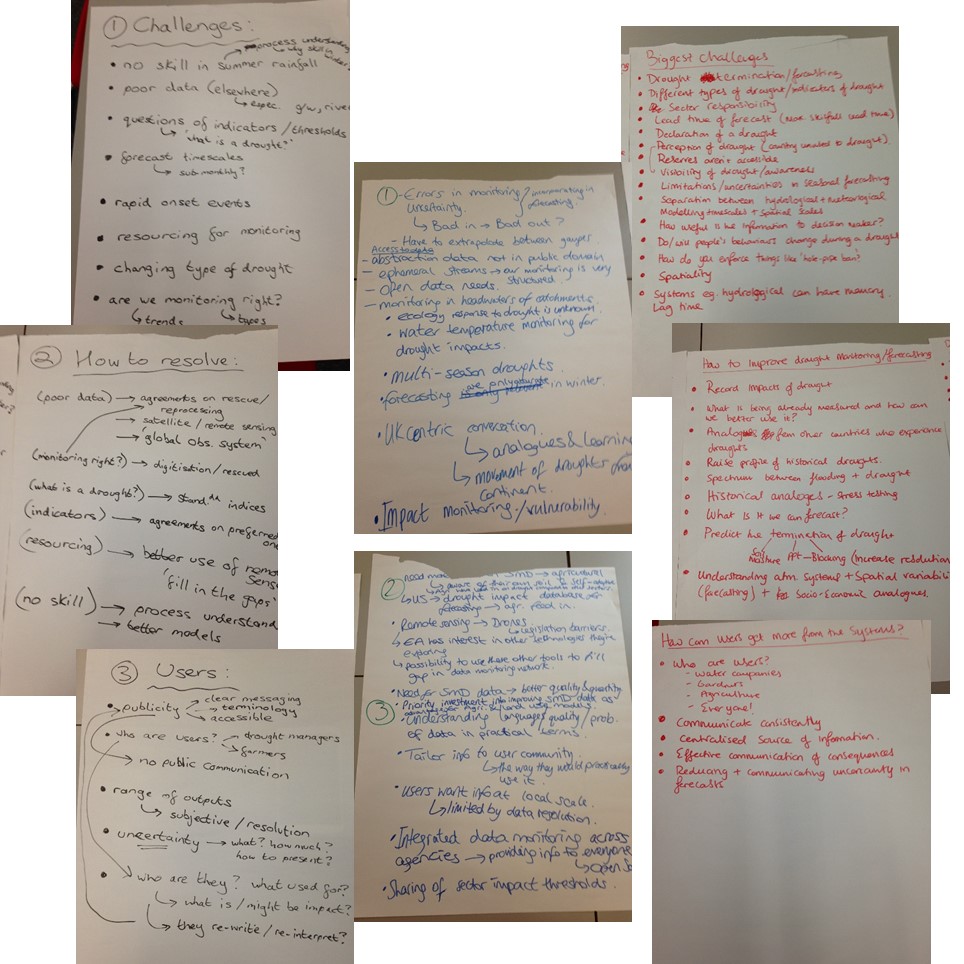By Laura Baker
After what feels like a pretty wet start to the year, it may seem strange to be talking about drought (although admittedly the warm weather over the last couple of weeks should help!). But in spring 2012, just four years ago, much of the south of England was experiencing severe drought conditions, following two years in which almost all months had lower than average rainfall (Figure 1). In this case it then proceeded to rain considerably more than average for much of the summer, preventing the drought from developing further; however had this not happened, parts of the country could have experienced severe water shortages. There are many other notable drought events that have occurred in the UK in recent decades, the most extreme being the 1976 drought where water restrictions became so severe in some areas that standpipes were introduced in the streets.

Figure 1: Percentage of average rainfall for April 2010 to March 2012. Source: http://www.metoffice.gov.uk/climate/uk/interesting/2012-drought
Drought in the UK can have severe social, economic and environmental impacts. Although little can be done to prevent a drought, monitoring and early warning systems can reduce the vulnerability of society to these events. At the recent RMetS/NCAS conference on high-impact weather and climate, we held a workshop on the topic of UK drought monitoring and forecasting science. This was in association with two ongoing research projects: IMPETUS (improving predictions of drought for user decision-making; part of the NERC UK Droughts and Water Scarcity programme) and DrIVER (drought impacts: vulnerability thresholds in monitoring and early-warning research). Speakers from these two projects gave an overview of recent scientific advances in this field, and a presenter from the Environment Agency gave a decision-maker’s viewpoint. These presentations were followed by a lively group discussion exercise in which the following three questions were discussed (Figure 2):
- What are the biggest challenges in drought monitoring and forecasting at present?
- How should we tackle these in order to improve drought monitoring/forecasting?
- How can users of drought monitoring/forecast systems get more from them?

Figure 2: Flipcharts summarizing group discussion at the workshop
Workshop attendees were from a range of backgrounds, including meteorologists, hydrologists, social scientists and industry practitioners, so the discussion was very varied.
Challenges in drought monitoring that were highlighted include issues with sparse data in some areas, meaning that accurate drought predictions and modelling of drought in these regions are difficult. Drought monitoring could be improved by using different instruments and methods to monitor rainfall and drought development, including potentially the use of drones. Better use could be made of existing data, including satellite data for monitoring soil moisture, and data that are collected on the socioeconomic impacts of drought could be more widely used.
Forecasting drought on timescales of months to seasons ahead is a challenging task. One key factor is the need to be able to forecast skilfully the atmospheric drivers of drought on these timescales. Recent advances in forecasting systems mean that there is promising skill in forecasting atmospheric circulation patterns that influence UK drought, such as the wintertime North Atlantic Oscillation. However, forecasting smaller scale features such as summer precipitation remains considerably more challenging.
In terms of users, the key issues raised were to do with communication, including the importance of consistency between sources of information, communicating the uncertainty in drought forecasts and being aware of how statements may be interpreted, or potentially misinterpreted.
The outcomes from this workshop will feed into ongoing work research UK drought, and hopefully when faced with the next 2012-type drought event we will be better placed to deal with it.
